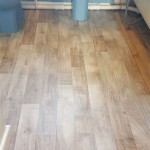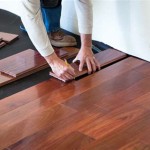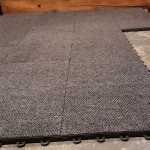Vinyl Plank Flooring In Basement
Luxury vinyl plank flooring (LVP) is a popular choice for basements because it is durable, waterproof, and easy to maintain. LVP is made from a durable plastic material that is resistant to scratching, fading, and moisture. It is also easy to clean and maintain, making it a great option for busy families and pet owners.
LVP is available in a wide variety of styles and colors, so you can find a look that matches your taste and décor. It can be installed over most existing flooring, including concrete, tile, and wood. LVP is also a relatively affordable flooring option, making it a great value for your money.
Is Vinyl Plank Flooring Waterproof?
Yes, LVP is waterproof. The durable plastic material that it is made from is resistant to moisture, so it can be installed in areas that are prone to moisture, such as basements and bathrooms. LVP is also a good choice for areas that are exposed to heavy foot traffic, such as kitchens and mudrooms.
Is Vinyl Plank Flooring Easy To Install?
Yes, LVP is easy to install. It can be installed over most existing flooring, and it does not require any special tools or skills. LVP is also a relatively quick and easy flooring option to install, so you can enjoy your new floor in no time.
How To Install Vinyl Plank Flooring In Basement?
To install LVP in your basement, you will need to follow these steps:
- Prepare the subfloor. The subfloor must be level, smooth, and dry. If the subfloor is not level, you will need to level it using a self-leveling compound.
- Install a vapor barrier. A vapor barrier will help to prevent moisture from rising up from the basement floor and damaging the LVP. You can install a vapor barrier by rolling it out over the subfloor and taping the seams together.
- Install the LVP. Start by installing the first row of LVP along the longest wall in the room. Use a spacer to ensure that the planks are evenly spaced. Continue installing the LVP rows until the entire floor is covered.
- Trim the LVP. Once the LVP is installed, you will need to trim the planks around the edges of the room. You can use a utility knife to score the planks and then snap them off.
- Install the molding. Molding will help to hide the edges of the LVP and give the floor a finished look. You can install molding by nailing or gluing it to the wall.
Benefits Of Vinyl Plank Flooring In Basement
There are many benefits to installing LVP in your basement. Some of the benefits include:
- Durability: LVP is a durable flooring option that is resistant to scratching, fading, and moisture.
- Waterproof: LVP is waterproof, so it can be installed in areas that are prone to moisture, such as basements and bathrooms.
- Easy to maintain: LVP is easy to clean and maintain. It can be swept, mopped, or vacuumed.
- Affordable: LVP is a relatively affordable flooring option, making it a great value for your money.
- Variety of styles and colors: LVP is available in a wide variety of styles and colors, so you can find a look that matches your taste and décor.
Conclusion
LVP is a popular choice for basements because it is durable, waterproof, and easy to maintain. It is also a relatively affordable flooring option, making it a great value for your money. If you are looking for a new flooring option for your basement, LVP is a great choice.

What Is The Best Flooring For Basements Get Pros And Cons

The Best Flooring Options For Your Basement

Lvt Vs Carpet What S Better For A Basement

5 Best Types Of Basement Flooring Home Matters Construction

Luxury Vinyl Plank In Basements

Installing Luxury Vinyl Plank Flooring In Our Basement Week 5 Of The One Room Challenge Willow Bloom Home

Lvt Vs Carpet What S Better For A Basement

Vinyl Plank Flooring Installation Basement Remodel Before And After

Best Flooring For Basement Floor City

How To Install Vinyl Or Laminate Floors In A Basement Over Concrete Slab Youtube








